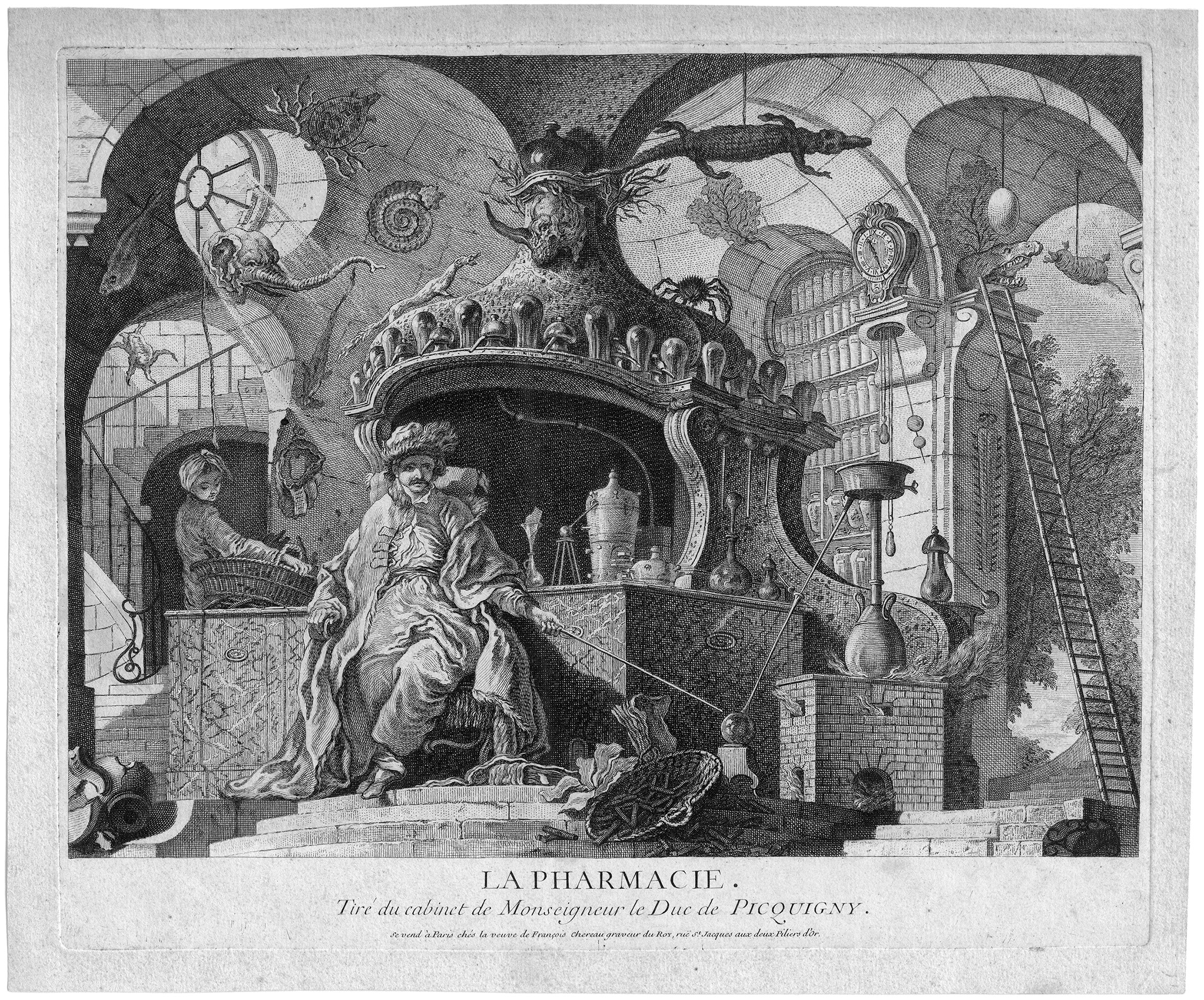Loading the page ...
Charles Nicolas Cochin the Elder
(1688–1754, Paris)
“La Pharmacie” – An Alchemist in his Laboratory with Animal Trophies and Various Accoutrements. Etching and engraving after Jacques de Lajoüe. 30.6 x 37 cm. (1738). Inventaire du Fonds Français, vol. 4, p. 635,
no. 250; Michel G 71.
Charles Nicolas Cochin, son of the painter Charles Cochin, began work as a painter himself before turning his attention to printmaking at the age of twenty-two. Admitted to the Académie Royale in the summer of 1731, Cochin made a name for himself primarily as a reproductive engraver, producing technically flawless prints after Chardin, Watteau, Lancret and other prominent artists of his time. One of his first commissions was a contribution to the “Histoire et Description de l’Hôtel des Invalides”, a volume of reproductive engravings featuring illustrations of the ceiling paintings and sculptures in this prominent secular building. The present print is also a reproductive engraving after decorative paintings which served as supraportas in the natural history cabinet of Michel Ferdinand d’Albert d’Ailly, Duc de Picquigny and Fifth Duc de Chaulnes. Jacques de Lajoüe produced a total of thirteen paintings which were etched by Cochin, John Ingram and Nicolas Tardieu. The series of prints with depictions of the free arts and the sciences was published in 1738 by Chéreau’s widow and exhibited at the Paris Salon. In keeping with contemporary fashion during the reign of Louis XV, the illustration reveals a marked penchant for exuberant decoration. The alchemist clad in oriental dress is sat in a mysterious laboratory full of all manner of exotic stuffed animals, corals, vessels and artefacts that would
not be out of place in a seething witches’ kitchen.
The etching exists in two different versions, both of which bear the address of Chéreau’s widow. The prints in the series were immensely popular from the moment they were published. This evidently prompted the decision to issue a revised edition in order to meet the increased demand. In the first version the scene is framed like a trompe l’oeil to match the interior decoration in the cabinet of the Duc de Picquigny, whereas the illustration in the second version on offer here has a rectangular format and has been extended on all four sides to incorporate additional pictorial elements (see M. Roland Michel, Lajoüe et l’art rocaille, Neuilly-sur-Seine, 1984, pp. 329–330, 332).
A very fine impression with narrow margins. Minor defects, an unobtrusive smoothed fold on the recto as well as minor creasing, otherwise in excellent condition. From the collection of Charles-Frédéric Mewès, London (Lugt 4171).
Contact us for further information